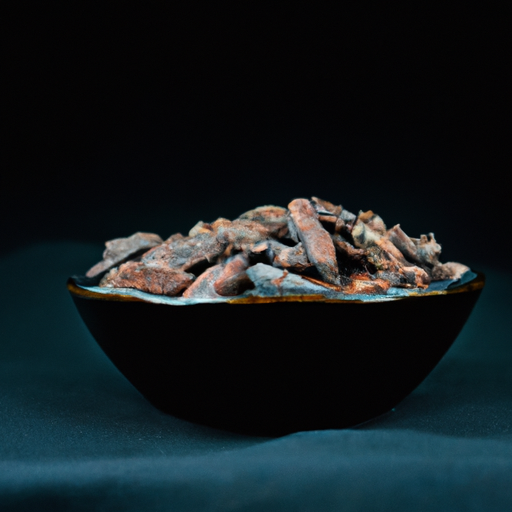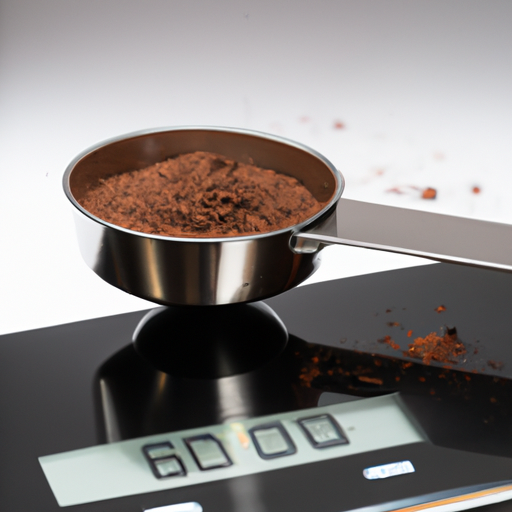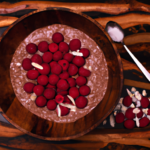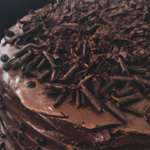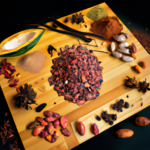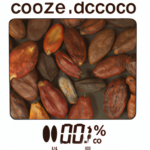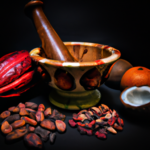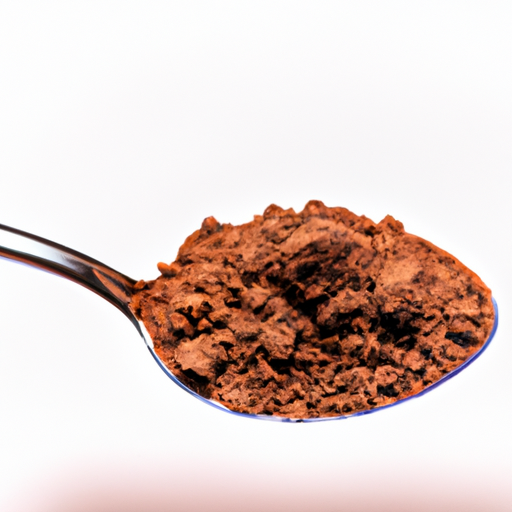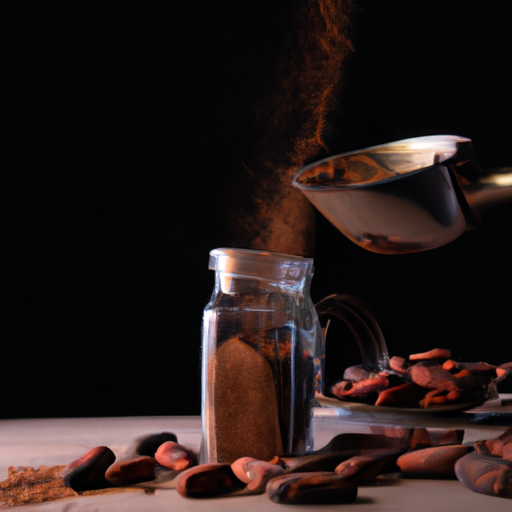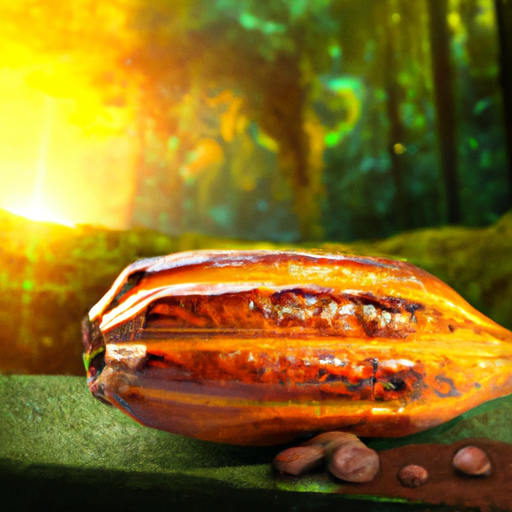I’ve always been fascinated by the wonders of nature and the incredible benefits it can provide for our health. One such marvel that has caught my attention recently is organic raw cacao nibs. You may have heard of cacao before, but do you know about the incredible power of these little nibs? Allow me to enlighten you.
Organic raw cacao nibs are derived from the seeds of the Theobroma cacao tree, which is native to the tropical regions of the Americas. These nibs are simply crushed pieces of the cacao bean, and they pack a punch when it comes to nutrition. Not only are they a great source of antioxidants, but they also contain essential minerals like magnesium, iron, and zinc.
But it’s not just their nutritional profile that makes cacao nibs so remarkable. They also have a rich, intense flavor that adds depth to any dish or treat. From smoothies to baked goods, there are countless ways to incorporate cacao nibs into your diet.
So, if you’re looking to boost your health and tantalize your taste buds, it’s time to dive into the world of organic raw cacao nibs. Trust me, once you discover their many benefits, you’ll never look back.
Key Takeaways
- Organic raw cacao nibs can be purchased online
- Consuming organic raw cacao nibs has multiple benefits
- Packed with antioxidants
- Helps protect against free radicals
The Origins of Cacao Nibs
The origins of cacao nibs can be traced back to the ancient civilizations of Central and South America. These small, dark, and crunchy nibs come from the beans of the Theobroma cacao tree.
Cacao nibs hold great historical significance as they were highly valued by the Mayans and Aztecs for their medicinal and cultural importance. In fact, cacao beans were often used as currency and consumed in sacred rituals.
The cultural traditions surrounding cacao nibs continue to this day, with many Central and South American countries incorporating cacao into their traditional foods and beverages.
Moving on to the nutritional benefits of cacao nibs, they are rich in antioxidants, fiber, and minerals like magnesium and iron. They also contain theobromine, a natural stimulant that can provide a gentle energy boost.
Nutritional Benefits of Cacao Nibs
One fascinating fact about these little chocolate bites is that they contain a whopping 9 grams of fiber per ounce, which is more than twice the amount found in a medium-sized apple. This makes organic raw cacao nibs an excellent source of dietary fiber.
In addition to fiber, cacao nibs are packed with essential nutrients and have several nutritional benefits. Here are some of the key benefits:
- High in antioxidants, which help protect the body against free radicals and oxidative stress.
- Rich in minerals such as magnesium, iron, and zinc, which are important for various bodily functions.
- Contains flavanols, a type of plant compound that has been linked to cardiovascular health.
- Provides a natural energy boost without the crash often associated with caffeine.
These nutritional benefits make cacao nibs a healthy addition to your diet.
Moving forward, let’s explore the culinary uses of cacao nibs.
Culinary Uses of Cacao Nibs
When it comes to culinary uses, cacao nibs can elevate your desserts by adding a delightful crunch and rich flavor.
They can also be incorporated into smoothies and breakfast bowls, providing a boost of nutrients and a subtle chocolatey taste.
Additionally, cacao nibs can be used as a topping for yogurt or ice cream, adding a textural contrast and a burst of intense chocolate goodness to your favorite treats.
Adding crunch and flavor to desserts
Looking to add some extra crunch and flavor to your desserts? Try incorporating organic raw cacao nibs! These crunchy snacks are a great alternative to chocolate chips, providing a burst of intense chocolate flavor without the added sugar. Cacao nibs are small pieces of crushed cacao beans, and they retain all the natural goodness of the cacao plant. They are loaded with antioxidants, minerals, and fiber, making them a healthier choice for your sweet treats. You can sprinkle them on top of ice cream, mix them into cookie batter, or even use them to create a chocolatey crust for pies and tarts. The possibilities are endless! In fact, cacao nibs can also be incorporated into smoothies and breakfast bowls, adding a rich and satisfying element to your morning routine.
Incorporating into smoothies and breakfast bowls
For an extra indulgent twist, try sprinkling these crunchy little treasures into your morning smoothie or breakfast bowl and elevate your taste buds to cloud nine! Incorporating cacao nibs into smoothies and breakfast bowls opens up a world of creative possibilities. Here are three ways you can enjoy the rich, chocolatey flavor and satisfying crunch:
- Blend a handful of cacao nibs into your favorite smoothie recipe for a burst of antioxidants and added texture.
- Sprinkle cacao nibs over your breakfast bowl, whether it’s acai, oatmeal, or chia pudding, for a delightful contrast of flavors and a nutritious boost.
- Mix cacao nibs into pancake or waffle batter to create a decadent breakfast treat that is both delicious and nourishing.
In addition to these sweet uses, cacao nibs can also be incorporated into savory dishes, adding a unique depth of flavor. Now, let’s explore another delightful way to enjoy cacao nibs as a topping for yogurt or ice cream.
Using as a topping for yogurt or ice cream
Indulge in the ultimate treat by sprinkling these delectable gems over your favorite creamy yogurt or silky smooth ice cream. This adds a delightful crunch and a burst of rich, chocolate flavor to every spoonful.
Cacao nibs can be used in various creative recipes to enhance the taste and texture of your desserts. Try mixing them into a homemade granola or incorporating them into a chocolate bark for a crunchy twist.
If you’re looking for alternatives to using cacao nibs as a topping, consider adding them to your morning oatmeal or blending them into a smoothie for an extra boost of antioxidants and fiber.
These versatile nibs can also be used in baking recipes, such as cookies or brownies, to give a unique chocolaty flavor.
Moving on to the health benefits of cacao nibs…
Health Benefits of Cacao Nibs
Cacao nibs, with their high levels of antioxidants, can contribute to improved cardiovascular health. These crunchy little bits of pure cacao are not only delicious, but they also offer several health benefits. Here are three ways cacao nibs can positively impact your well-being:
-
Skin benefits: Cacao nibs contain flavonoids that help protect the skin against harmful UV rays and promote collagen production, resulting in healthier and more youthful-looking skin.
-
Mood enhancement: Cacao nibs contain compounds that stimulate the production of endorphins, also known as the ‘feel-good’ hormones. This can help improve mood and reduce symptoms of depression and anxiety.
-
Rich in minerals: Cacao nibs are a great source of essential minerals like magnesium, iron, and zinc. These minerals play a crucial role in various bodily functions, including energy production, immune system support, and hormone regulation.
Incorporating cacao nibs into your diet is a simple and tasty way to boost your health.
How to Incorporate Cacao Nibs Into Your Diet
Including these nutrient-rich crunchy bits of pure cacao into your daily meals and snacks can be a simple and delicious way to enhance your overall well-being. Cacao nibs are packed with health benefits, including being a great source of antioxidants, fiber, and minerals like magnesium and iron. They can support heart health, improve mood, and boost brain function. Here are some recipe ideas to incorporate cacao nibs into your diet:
- Sprinkle them on top of your morning oatmeal or yogurt for an added crunch and chocolatey flavor.
- Blend them into smoothies for a nutritious and energizing boost.
- Mix them into homemade granola bars or energy balls for a healthy snack on the go.
- Use them as a topping for desserts like ice cream or chia pudding.
Incorporating cacao nibs into your diet can be a tasty and beneficial addition. Next, we’ll explore where to buy organic raw cacao nibs.
Where to Buy Organic Raw Cacao Nibs
When it comes to buying organic raw cacao nibs, there are several options available. Health food stores and specialty grocery stores often carry them in the baking or bulk section. Online retailers also offer a wide selection of organic raw cacao nibs, allowing you to conveniently order them from the comfort of your own home.
Consuming organic raw cacao nibs offers a multitude of benefits. Packed with antioxidants, they can help protect against free radicals and promote overall health. They are also a great source of magnesium, iron, and fiber.
Incorporating organic raw cacao nibs into your diet is easy and delicious. You can sprinkle them on top of yogurt or smoothie bowls for added crunch and flavor. They can also be used in baking, such as in cookies or brownies, for a rich chocolatey taste. Get creative and experiment with different recipes to fully experience the unique and delightful flavor of organic raw cacao nibs.
Frequently Asked Questions
Are cacao nibs the same as cocoa powder or chocolate?
No, cacao nibs are not the same as cocoa powder or chocolate. Cacao nibs are the purest form of chocolate, made from crushed cacao beans. They are rich in antioxidants and provide numerous health benefits.
Can cacao nibs be consumed by people with a chocolate allergy?
I can’t believe it! Cacao nibs are a miracle for chocolate lovers with allergies. They are packed with nutrition and offer all the benefits of cacao, without the risks of a chocolate allergy.
Are cacao nibs suitable for people following a low-carb or ketogenic diet?
Cacao nibs are suitable for people following a low-carb or ketogenic diet due to their minimal carbohydrate content. They offer numerous benefits, such as being rich in antioxidants and providing a good source of healthy fats. Incorporating cacao nibs into recipes can add a delicious and nutritious twist.
Can cacao nibs be used as a substitute for chocolate chips in baking?
Yes, cacao nibs can be a delightful substitute for chocolate chips in baking. They add a rich, intense flavor and a satisfying crunch. Try using them in homemade granola or incorporating them into smoothie bowls for a healthy twist.
How should cacao nibs be stored to maintain their freshness and flavor?
To maintain the freshness and flavor of cacao nibs, store them in an airtight container in a cool, dark place. This helps to protect their natural oils and prevent them from becoming rancid. Regularly check for any signs of spoilage before consuming. The benefits of consuming cacao nibs include their high antioxidant content and potential positive effects on mood and cognition.
What is the Difference Between Organic Raw Cacao Nibs and Raw Organic Cacao Nibs?
The distinction between organic raw cacao nibs and raw organic cacao nibs lies in their production processes. “Raw organic cacao nibs explained” refers to the explanation of these products. Organic raw cacao nibs are produced from unroasted cacao beans, while raw organic cacao nibs can originate from roasted cacao beans. Both options offer unique flavors and nutritional profiles, catering to individual preferences.
Conclusion
In conclusion, organic raw cacao nibs are like tiny bursts of pure energy, awakening our senses and nourishing our bodies. They are packed with nutrients such as antioxidants, fiber, and minerals, providing numerous health benefits. Cacao nibs are the purest form of chocolate, made by crushing cacao beans into small pieces. They have a rich, intense chocolate flavor with a slight bitterness.
Cacao nibs are versatile and can be used in various ways. They can be added to smoothies, baked goods, or sprinkled on top of yogurt or oatmeal. They can also be used as a healthier alternative to chocolate chips in recipes. Cacao nibs are a great source of natural energy and can be enjoyed as a snack on their own.
When choosing cacao nibs, it is important to opt for organic varieties. Organic cacao nibs are grown without the use of synthetic pesticides or fertilizers, ensuring that they are free from harmful chemicals. They are also minimally processed, preserving their natural nutrients and flavors.
In summary, organic raw cacao nibs are a nutritious and delicious superfood that can enhance both our health and culinary creations. Their rich flavor and numerous health benefits make them a valuable addition to any conscious eater’s pantry. So, let us embrace the magic of cacao nibs and let them guide us on a journey towards vitality and joy.

